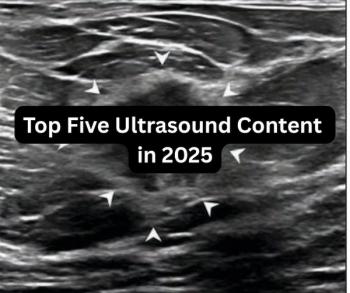
How to Handle a COVID-19 Vaccine-Related Adenopathy Seen on Breast MRI
The Hospital of the University of Pennsylvania offers guidance – BI-RADS scoring and follow-up recommendations – for unilateral axillary lymphadenopathies seen on breast MRI in women who have received the vaccine.
The baseline breast MRI of a 48-year-old woman who has the BRCA1 mutation, as well as a strong family history of breast cancer, shows a unilateral left axillary lymphadenopathy with level 1 nodes that are asymmetric in size and number from her right breast. What do you do?
Based on recently published research, you should find out if she has received the COVID-19 vaccine. Then, you can determine how best to proceed.
Related Content:
But, what about when you see them on breast MRI? Guidance has been varied, so having a plan in place will be important as vaccination numbers continue to rise. To provide an answer, the Hospital of the University of Pennsylvania published recommendations in the
“Early clinical experience with coronavirus disease (COVID-19) vaccination suggests that the approved COVID-19 vaccines cause a notably higher incidence of axillary lymphadenopathy on breast MRI compared to other vaccines,” said a team led by Christine E. Edmonds, M.D., assistant professor of radiology at the Hospital of the University of Pennsylvania. “Guidelines are needed to appropriately manage MRI-detected unilateral axillary lymphadenopathy in the era of COVID-19 vaccination and to avoid biopsies of benign reactive nodes.”
Related Content:
At their institution, the team said, all MRI-detected isolated unilateral axillary lymphadenopathies ipsilateral to the vaccination arm are considered to be a vaccine-related if they are visualized within four weeks of either vaccine dose.
For these findings, the team outlined this guidance:
- Add questions regarding COVID-19 vaccination dates and laterality of administration to all intake forms for breast imaging exams
- Assess the lymphadenopathy as BI-RADS 3
- Recommend follow-up ultrasound within 6-to-8 weeks after the second vaccine dose
- When clinically appropriate, schedule screening MRI 6-to-8 weeks after the second vaccine dose to minimize the chance of detecting reactive lymphadenopathy that will prompt follow-up imaging
The team also added context around the expected time-course of the visible axillary lymphadenopathies seen on breast MRI. Although little has been published, they extrapolated a timeline from relevant FDG PET/CT studies based on recent human influenza vaccination impacts on axillary nodal assessment.
Based on existing literature, they said, providers can expect to see adenopathies within 14 days of the vaccine. All such findings seen on FDG PET/CT in the studies disappeared after that two-week period.
“This finding suggests that the timeframe that radiologists may expect to see post-vaccination reactive axillary lymphadenopathy on anatomic imaging, such as breast MRI, may mirror the timeframe of increased SUV on FDG PET/CT,” they explained.
The situation around these adenopathies and the COVID-19 vaccine remains fluid as much more information is likely to emerge as more patients are vaccinated and additional vaccines are approved and implemented in clinical use.
“As we gain further data on the expected time-course of axillary lymphadenopathy post COVID-19 vaccination, we may refine these guidelines,” they said. “However, in the meantime, this management pathway will allow us to avoid many unnecessary biopsies of benign vaccine-related reactive lymphadenopathy.
For more coverage based on industry expert insights and research, subscribe to the Diagnostic Imaging e-Newsletter
Newsletter
Stay at the forefront of radiology with the Diagnostic Imaging newsletter, delivering the latest news, clinical insights, and imaging advancements for today’s radiologists.




























